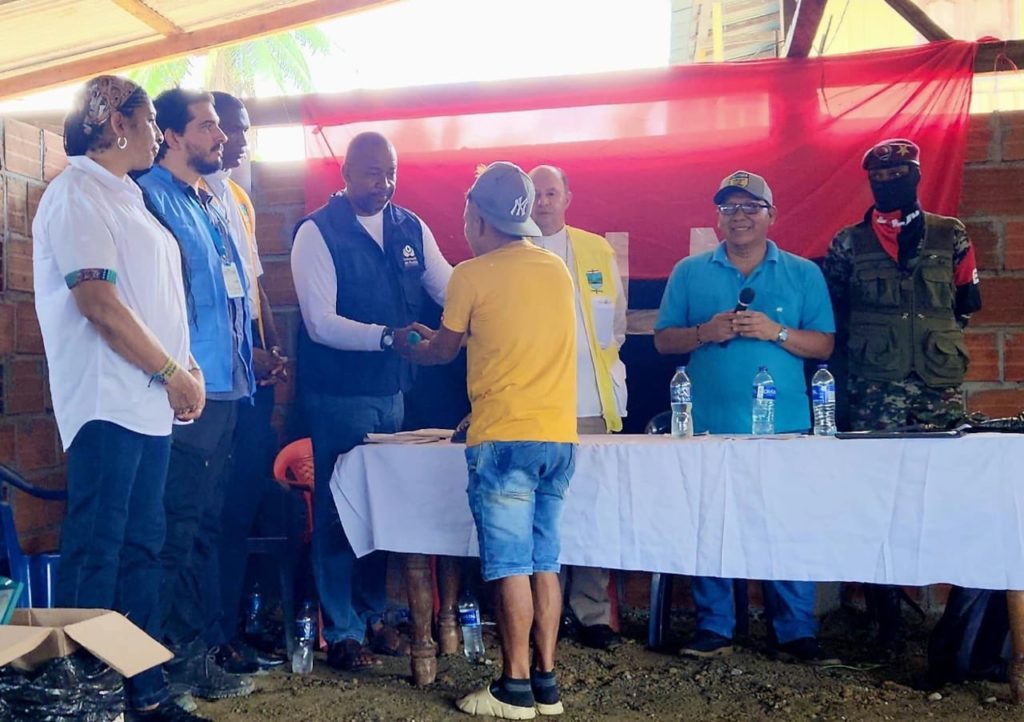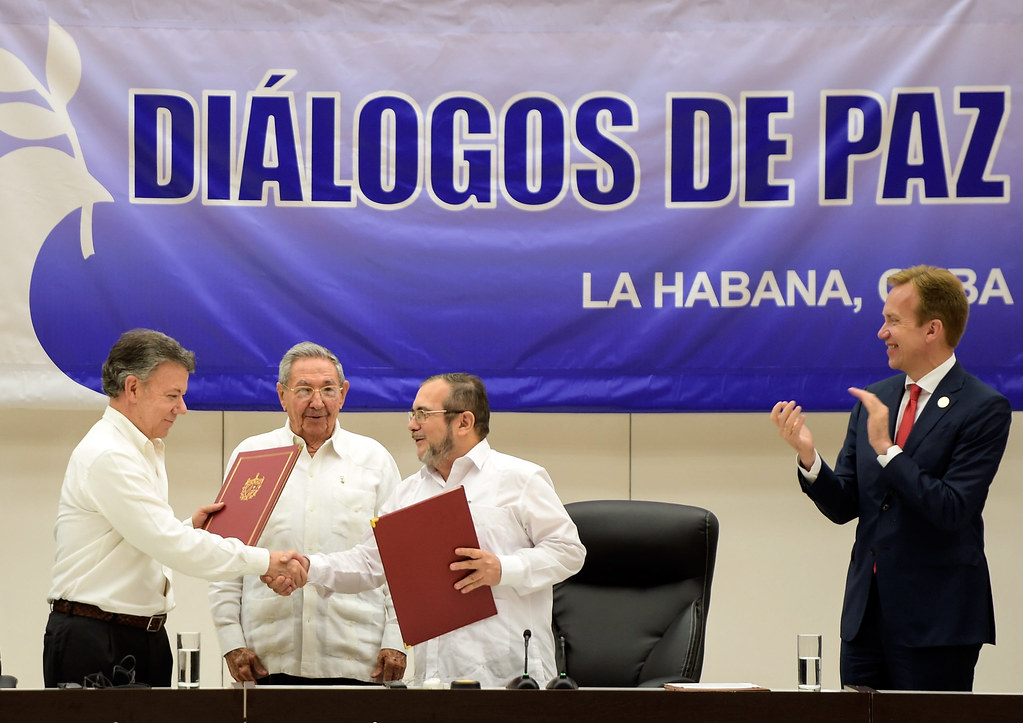
Colombia is currently undergoing three parallel peace processes that demonstrate, among many other things, the need for peace education in the country. In addition to the multiple problems that have arisen, normal after so many decades of violence, non-compliance and fanaticism, today the country is exhausted and distrustful of the dialogue tables that the government maintains with illegal armed groups within the Total Peace project.
While receiving applause and congratulations from abroad, this project has little citizen support in Colombia, if we take into account the polls and the feelings of the street. A survey conducted by Datexco Company for W Radio, indicates that 69% of Colombians believe that the National Liberation Army (ELN) uses the peace process to strengthen itself militarily, compared to 19% who do not.
In reality, this lack of confidence and pessimistic mindset is explained by the decades of violence and the two failed peace processes that Colombia has carried out in the last seventy years, but also by the lack of discretion that is experienced today at the dialogue tables.
Social fatigue and pessimism
Of the multiple peace processes Colombia has experienced, the only successful one since the 1950s was the one led by President Juan Manuel Santos, between 2012 and 2016, with the extinct FARC-EP. Although there were several dissidents, insurgents who did not accept that agreement and returned to violence, the bulk of the historic guerrillas demobilized and today participate in democratic politics with a legal party, Comunes, which is part of the government coalition.
This success not only earned Colombia worldwide congratulations, but its president was recognized with the Nobel Peace Prize. However, the process was almost derailed, because when the agreement was submitted to a plebiscite, as President Santos had promised, it was rejected by the citizens. Although with a close result, the “No” to the agreement won the vote, which forced the government of the time to make up the document and approve it through the back door, without resubmitting it to popular consideration.
Thus, it is not surprising that Colombians have little confidence in the dialogues that the first leftist government is now carrying out with armed and illegal groups, with which it is supposed to have a greater ideological affinity.

Own difficulties
Each peace process has its own nature and difficulties. However, to the challenges facing the current dialogues must be added the nature of the armed groups, three in particular, with which Colombia is talking about peace. One of them, the ELN, is the oldest guerrilla group in the country and in the continent, with a very plural structure and a leadership that has shown little capacity to impose the decisions it agrees with the state on all the armed fronts.
This organization is very different from the extinct FARC. In 2016, despite the apocalyptic predictions of the conservative opposition of the Democratic Center, what was agreed in Havana was the submission of the leading cadres of the illegal group to a transitional justice system, the JEP, and the option for the ex-guerrillas to participate in politics as a legal group, guaranteeing a minimum presence in Congress for eight years, regardless of the votes obtained. In addition, the state undertook to make available a significant economic allocation to reinsert demobilized guerrillas and their families into civilian life, as well as an agrarian reform that is progressing with great difficulty.
The historical desire of the extinct FARC was always to participate in politics, as a legal party. This is not the case of the ELN, which has already repeatedly announced that it has no interest in becoming a legal political party. Ivn the words of the High Commissioner for Peace, Otty Patiño, at the dialogue table with this armed group “they talk more about economics than politics”.

Urgent need for peace education
What all this shows is that the government must make an important exercise in peace education. In a country accustomed to social and political violence, to betrayals, to non-compliance by the state and the guerrillas, pessimism is the logical result of internalized war.
In Colombia, no one has lived without seeing illegal groups of different ideologies taking up arms and fighting for one reason or another. With bombastic and often empty speeches, these organizations have internalized their struggle and in most cases have disconnected from popular sentiment, which does not want more war.
Social support for the armed struggle is negligible, and rejection is overwhelming. However, the political disconnection and the enormous economic and military benefits offered by drug trafficking and other illegal activities continue to influence some in favor of war. Social exclusion and lack of opportunities do the rest, feeding the ranks of these illegal groups with those who have few or no options in life.
President Petro’s government has made it clear during his 18 months in office, that Colombia’s problem is structural. The country needs, therefore, a profound reform, offering opportunities to people who have been left out of the construction of the country to distance themselves from violence. However, this is a solution that requires a long journey. A country cannot be reformulated in one legislature, so the government must contemplate acts with more immediate results and accompany them with the necessary social pedagogy to get citizens’ hopes up again.
Short-term results
Colombia needs short-term results to gain supporters for its proposal for long-term structural change. The government urgently needs to demonstrate real progress in the peace it is currently advancing with the armed groups. So far, after so many months of talking about peace, what the public perceives are the outbursts and the tone of some guerrillas accustomed to bravado and little given to discretion, something absolutely necessary if any peace process is to be successful.
The constant violations of the cease-fire, in force since last August 2023, the kidnappings and the public manifestations of dissent do not help at all to recover the credibility that dialogues need if they are to win over a citizenry that does not want more political violence.
Peace with the FARC was achieved after four years of long negotiations, and with as many months of previous clandestine contacts and trial and error. Unlike what is happening now, that process was carried out while the war was still going on in the country and with a very clear agenda. Moreover, it was agreed from the beginning that “nothing was agreed until everything was agreed”, i.e., there would be no partial agreements.
This offered credibility, seeing how it progressed point by point until completing the success sealed in 2016, first in Havana and then in Colombia. Repeating the image of the former guerrilla leader, alias Timochenko, shaking hands with the Colombian head of state is something that few Colombians today believe could happen with the current armed groups. It is up to the government to get things right, or at least to try.

See all the latest news from Colombia and the world at ColombiaOne.com. Contact our newsroom to report an update or send your story, photos and videos. Follow Colombia One on Google News, Facebook, Instagram, and subscribe here to our newsletter.

